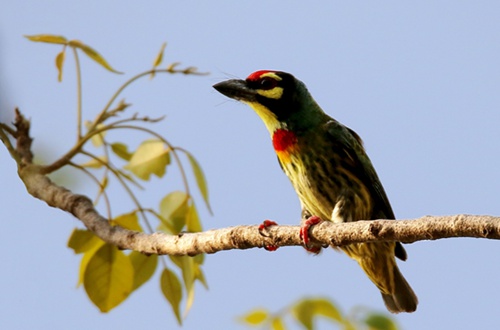
Rubber (Hevea brasiliensis) is one of the most rapidly expanding cash crops in tropical Asia, especially in Xishuangbanna. Conserving tropical forest depends on effectively managing human-modified landscapes. Identifying measures to improve biodiversity outcomes in rubber-forest mosaics is critical for tropical fauna.
Researchers from Xishuangbanna Tropical Botanical Garden (XTBG) examined bird diversity in the rubber-natural forest mosaic of Xishuangbanna. They presented a novel analysis of the impacts of micro-scale habitat features in rubber plantation versus landscape scale natural forest retention in a region with intensive rubber monoculture.
The study focused on two scales of habitat features: a landscape and individual plantation (plot) scale. The researchers investigated which functional groups of birds can persist in rubber plantations, evaluated the number of bird species found in rubber, natural forest, and both land cover types. They also investigated how bird species responded to changes in natural forest at landscape level.
The researchers observed substantial reductions in species richness in rubber as compared to natural forest. Among the species recorded, 73% were forest-dependent and only 27% exhibited some degree of flexibility in their habitat requirements. At the landscape scale, frugivores and insectivores exhibited the most marked response to forest area changes.
Rubber cannot support the majority of the tropical birds in Xishuangbanna. However, there are beneficial, though limited, pathways for rendering rubber more hospitable toward wildlife. The first is retaining older trees, and the second is increasing inter-tree planting distance.
The results showed that increasing forest area would exert the most dramatic impacts on local and landscape-level avian diversity. Forests act as reservoirs of avian diversity.
The researchers thus proposed that a priority for rubber-producing regions must be increasing the overall area of natural forest conserved, as well as enhancing their connectivity.
The study entitled "Natural forest at landscape scale is most important for bird conservation in rubber plantation" has been published online in Biological Conservation.

Megalaima haemacephala, a tropical bird mainly fruit eating but will take sometimes insect, in Xishuangbanna. (Image by ZENG Xiangle)

86-10-68597521 (day)
86-10-68597289 (night)

86-10-68511095 (day)
86-10-68512458 (night)

cas_en@cas.cn

52 Sanlihe Rd., Xicheng District,
Beijing, China (100864)

